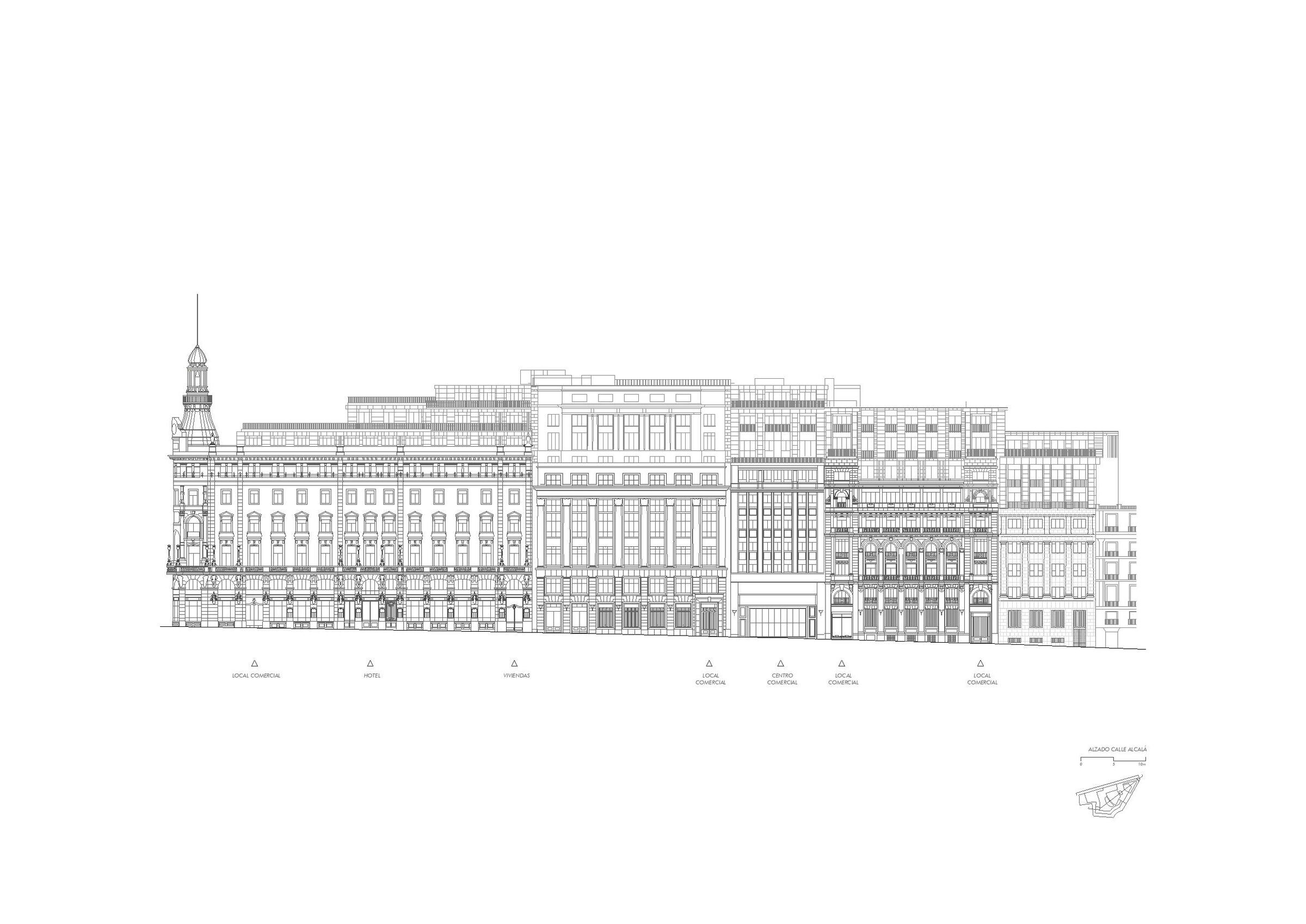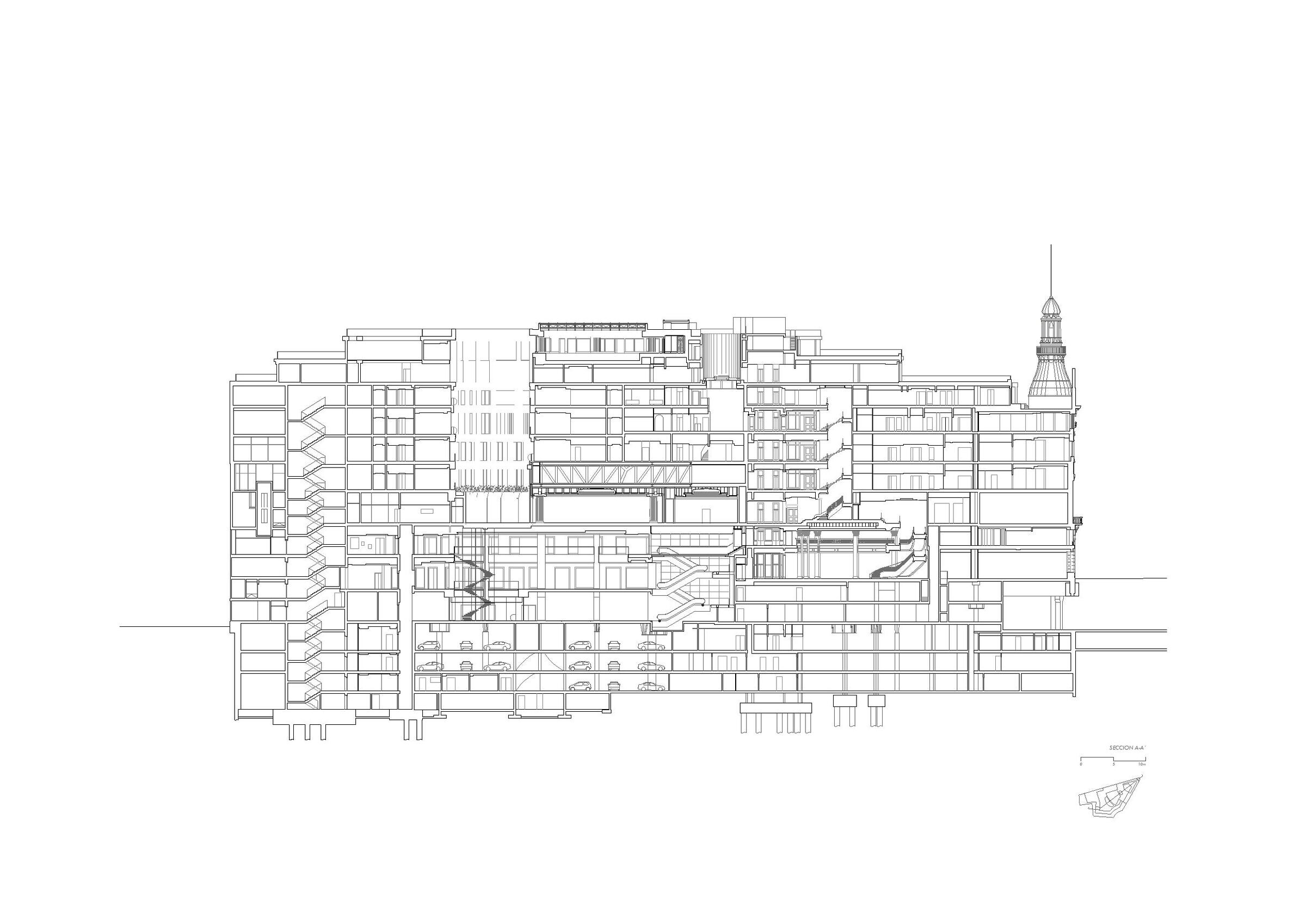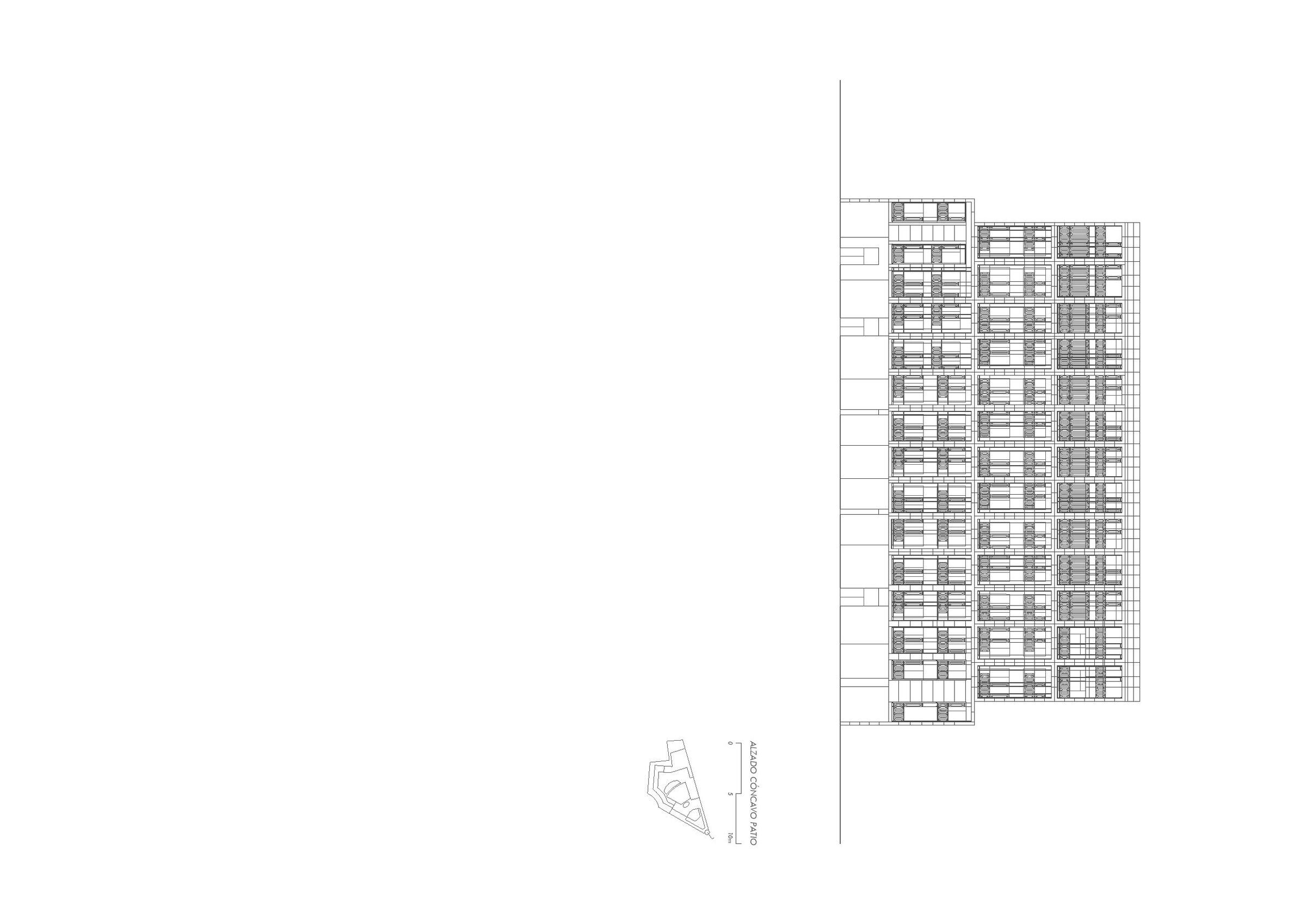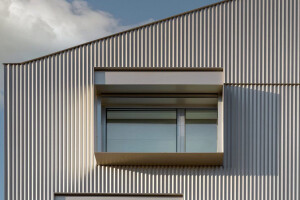Centro Canalejas Madrid (Spain) is one of the most significant urban development projects undertaken in Europe in recent times. It encompasses the restoration of seven historic buildings, two of them from the end of the nineteenth century, which were merged as a result of the different bank mergers and that were in disuse for 15 years. The geometry that serves as the basis for the overall development of the project is a classical, radial geometry with an axis of symmetry in the bisector that shapes the building on street Alcalá 14 and that extends to the rest of the buildings.
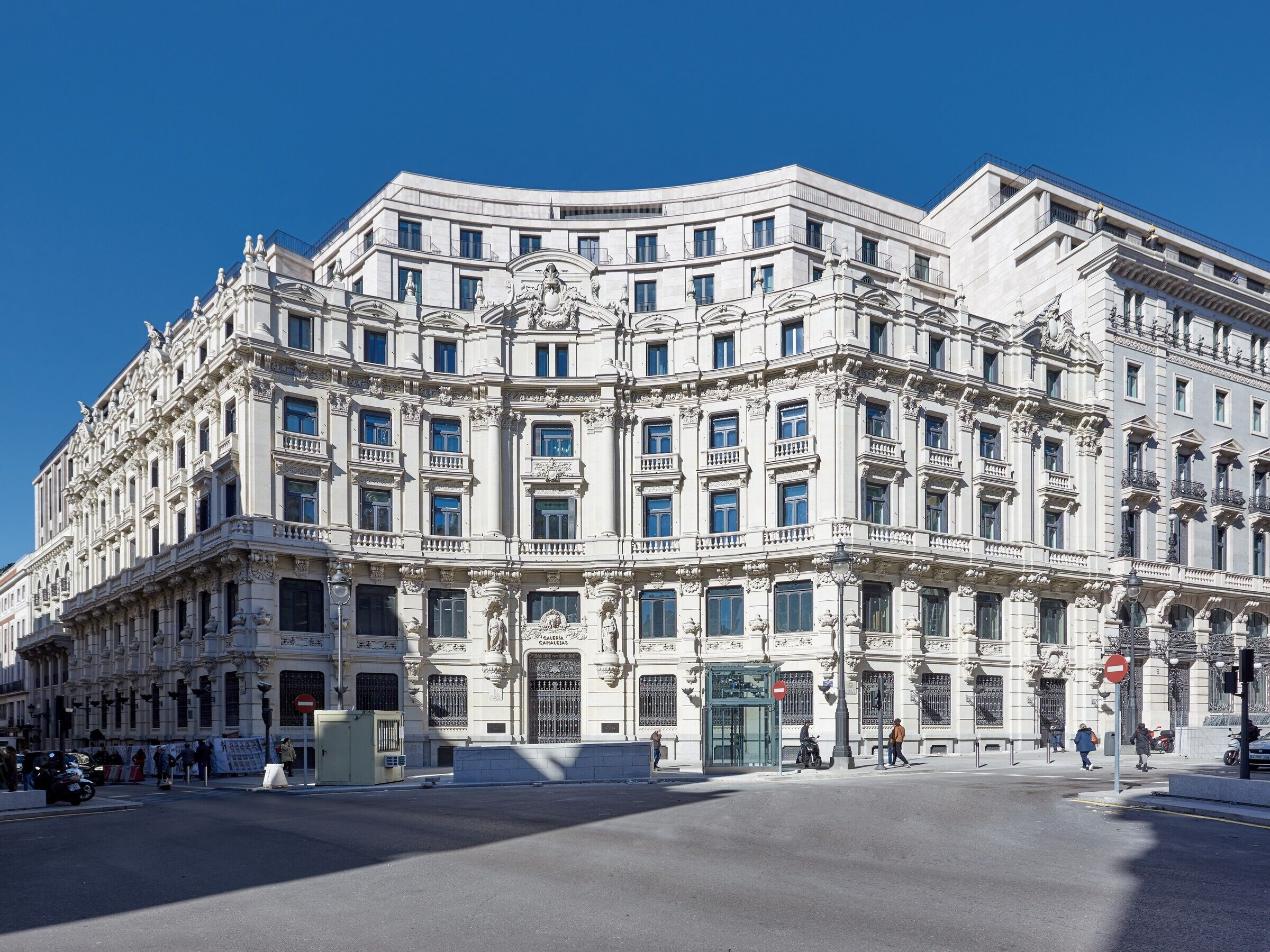
Estudio Lamela has designed a complex of 50,000 m2 with different uses: a Grand Hotel of 200 rooms, a shopping arcade of 15,000 m2, 22 luxury apartments and an underground parking garage for 400 spaces. The criterion that has guided the redevelopment has been the custody, protection and restoration of all the elements and spaces of value or of historical or artistic uniqueness of the original buildings.
All the facades and part of the original structure have been preserved, as well as various elements of the interior: skylights, locksmithery, wooden carpentry, as well as unique elements such as chimneys, and even a vault room. All this has been relocated inside the building in its final state. A development of this magnitude is rarely presented in the history of a city and it has to be broadly designed. It not only affects the seven unique buildings, but also their entire surroundings, from an urban, economic and social point of view. It impacts urban traffic, the design of the perimeter routes, public transport, the adjoining facades; that is, the lives of all the citizens. This reflection has been present in every one of the architectural decisions.
CENTRO CANALEJAS, ICON OF A NEW MADRID
- One of the most important urban development projects in Europe in recent decades.
- With an area of 50,000 m2, it houses a Grand Hotel operated by the Four Seasons chain with 200 rooms, a shopping arcade of 15,000 m2, 22 luxury apartments and an underground parking garage for 400 spaces.
The Centro Canalejas, an architectural project from Estudio Lamela, is one of the most important urban development projectsundertaken in Europe in recent decades. It involves the refurbishing of seven historic buildings in Madrid (Alcalá 6, 8, 10, 12, 14, Plaza de Canalejas 1 and Carrera de San Jerónimo 7), the work of distinguished architects, which were joined together as a result of different bank mergers. All the buildingshad been in disuse for 15 years due to the fact that the financial entity that owned them moved to a new location.
Estudio Lamela has designed a complex of 50,000 m2 with different uses: a Grand Hotel of 200 rooms operated by the Four Seasons chain, a shopping arcade of 15,000 m2, 22 luxury apartments and an underground parking garage for 400 spaces.
The hotel will be the largest created in Madrid in its history, only comparable to what the historic Ritz and Palace (1912) once represented. The last Grand Hotel opened in the capital was the Hotel Villamagna (1974), more than four decades ago. This building overcomes the historical lack of this kind of establishment so representative in the capital.
As Carlos Lamela says, "Centro Canalejas is an exceptional challenge, a challenge that does not end with its construction. On the contrary, that is where its life begins: a path that will lead it to becoming the flagship of a new Madrid. Even its layout, as one can imagine, presages this."

Integrating the old and the contemporary
The project is a real challenge. Redevelopments in the historical centres of large cities using existing high-value properties have always been complex.
The mixed-use approach already existed in the original buildings, which combined a residential area with those ofshopping and offices. These typologies wereundermined when several banking entities occupied the entirety of the buildings, and now it has been recovered as a basic proposal: a hybrid complex in which the hotel, the residences and the shopping arcade coexist. The hotel use is incorporated as a novelty that had not been present to date, and which does not differ substantially from the residential use for which the upper floors of the buildings were designed.
Centro Canalejas is a clear exponent of coexistence between the old and the contemporary. The design of the new facades located on the upper floors and set back from the historic facades attempts to maintain the identity and the individual order of the buildings they accompany, but also demonstrates with sincerity that it is a unique modification.
The project follows the same assumptions that govern the latest international architectonic currents of redevelopment in historical centres that integrate unique buildings.
Protection and restoration of heritage
The criterion that has guided the redevelopmentundertaken by Estudio Lamela has been the custody, protection and restoration of all the elements and spaces of value or of historical or artistic uniqueness of the original buildings.
All the facades and part of the original structure have been preserved, as well as various elements of the interior: skylights, locksmithery, wooden carpentry, as well asunique elements such as chimneys, and even a vault room. All this will be relocated inside the building in its final state.
The large interior courtyard of the Alcalá 14 building has been maintained due to its spatial uniqueness with its stained glass window in its original position. It will be located in the hotel's grand lobby. The space located in the corner of the second floor of the same building also stands out for the richness and value of its decorative elements. Here will be located the living room of the master suite. The office on the first floor, with its original wood panelling, will be recovered as a reserved dining room of the restaurant.
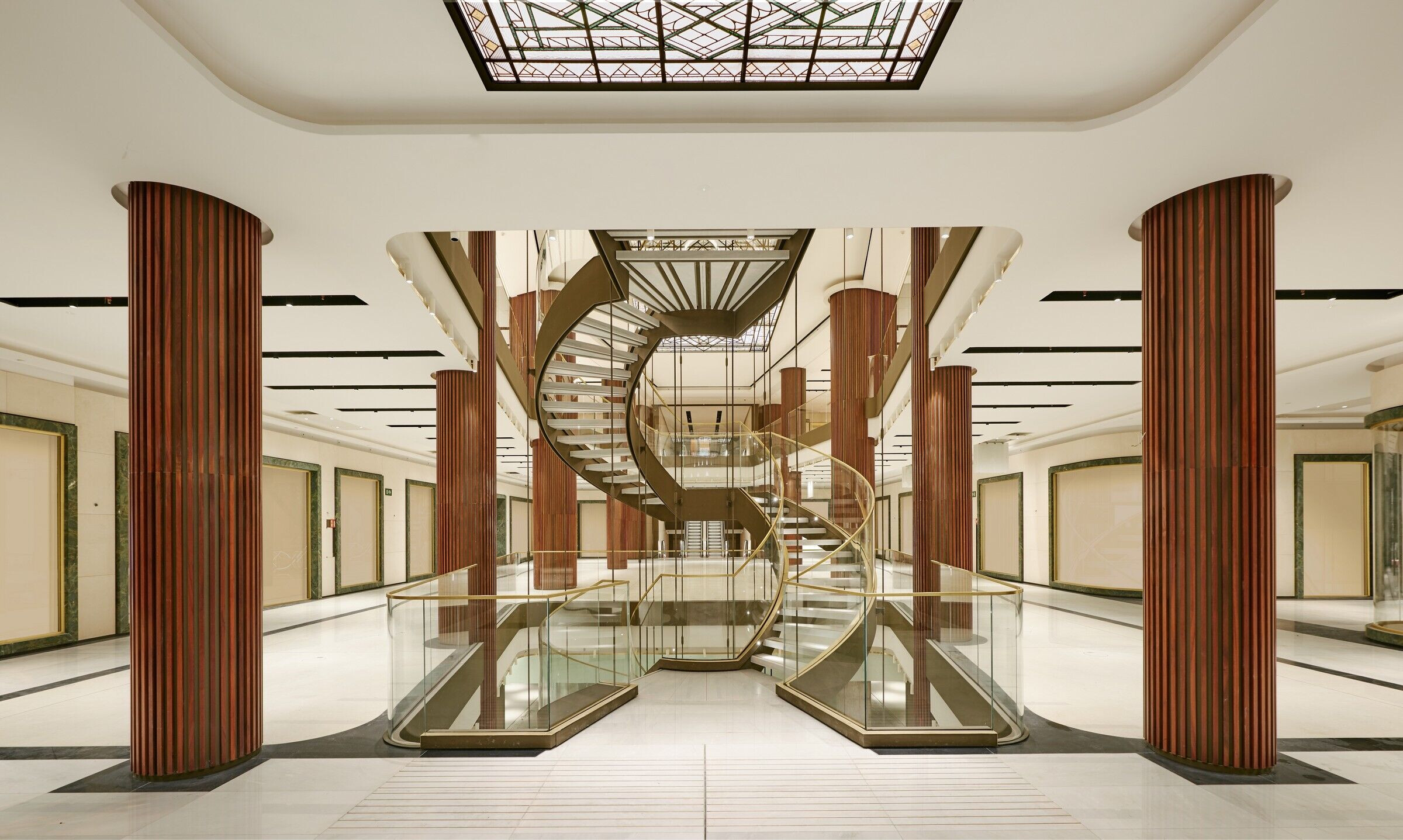
Maintain the identity of the different buildings
Estudio Lamela has proposed, as a basis for the general development of the project, a classical, radial geometry, with an axis of symmetry in the bisector that defines the building in Alcalá 14 and that extends to the rest of the buildings. A large interior patio has been created that provides ventilation and natural light to all floors, a solution that is also used in other areas of the hotel such as the Spa.
With the aim of preserving the identity of the seven buildings, minimizing the visual impact of the renovation and maintaining the original urban scale, the three new floors have been set back and the penthousesexisting in the different properties have been replaced by new facades that respect the individual architectural composition of each of the buildings.
For its part, the roof behaves like a fifth facade, since it integrates the same within the urban fabric of the city and incorporates green areas that provide vegetation to the central core of Madrid.
"A development of this magnitude is rarely presented in the history of a city and it has to be broadly designed. It not only affects the seven unique buildings, but also their entire surroundings, from an urban, economic and social point of view. It impacts urban traffic, the design of the perimeter routes, public transport, the adjoining facades; that is, the lives of all of us. This reflection has been present in everyone of the architectural decisions," Carlos Lamela concludes.
